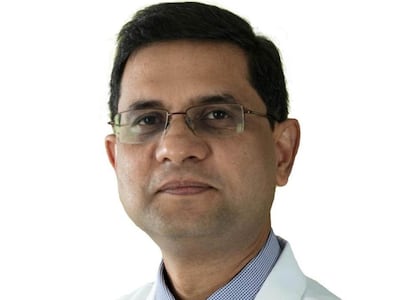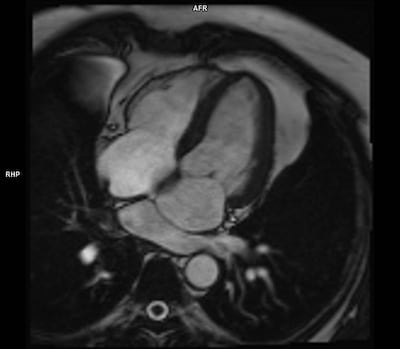The remarkable case of an Indian man found to have five heart chambers instead of four shocked Dubai doctors who had never encountered the rare condition in their careers.
But medics say such startling discoveries are gradually becoming more common – with lifestyle choices a contributing factor.
People starting families later in life and those in consanguineous marriages are at a greater risk of giving birth to children with heart defects, experts said.
The extraordinary diagnosis reported this week involved a 51-year-old patient experiencing chest pains, who thought he was having a heart attack so visited Aster Hospital in Mankool, Dubai.
He was found to have a condition called cor triatriatum sinister, which affects fewer than 0.004 per cent of the population, resulting in three upper chambers of the heart rather than the usual two.
Doctors believe it is the same condition that ended the life of the star of the golden age of Indian cinema, Madhubala, who died aged 36 in 1969.
With few other medical cases from which to refer, doctors said there was little guidance in how to deal with the man’s symptoms after he arrived in hospital in Dubai.
Entering uncharted waters

“First we had to rule out an acute emergency and then evaluate what was the cause of his chest pain,” said Dr Sachin Upadhyaya, a cardiology specialist at Aster Hospital who treated the man, who did not want to be named.
“The most common cause is coronary artery disease and acute heart attack or angina.
“But when we did an electrocardiograph, everything was normal.
“The second step was cardiac imaging and the heart function was OK but we could see something unusual in the left atrium.
“We were careful, as knew there was something there, but none of us had encountered that in real practice before.

“This is so rare, there are no standard treatment guidelines in any European Society of Cardiology or American Society of Cardiology guidelines.”
Doctors were able to treat the man with medication, rather than surgery, and he is now recovering at home – although he must return for regular check-ups.
Will such cases always be so rare?
Congenital heart problems are usually picked up at birth through routine screening, making the discovery all the more remarkable in an otherwise healthy adult.
Defects include structural heart problems and are more common in children born to parents in consanguineous relationships or in those whose parents had heart defects.
Men are more likely than women to have the condition.
More common examples of heart anomalies include holes inside heart walls and narrowed or leaky valves. Severe cases usually involve missing blood vessels or heart chambers or a poorly formed heart and occur in fewer than 1 per cent of births.
Despite the rarity of such problems, doctors said they are beginning to see more cases due to parents starting families later in life.
“The incidence is not small, historically it has been around eight severe defects in 1,000 births worldwide,” said Dr Anil Bansal, a consultant cardiologist at Saudi German Hospital, Dubai.
“Because more people are having children later, it has now risen to around 9.5 in every 1,000 births.
“The age of parents and consanguinity, such as marriages among cousins, is a big issue.
“These are rare defects but corrective surgery is relatively simple.”
One of the more common anomalies is an atrial septal defect where there is a hole in the dividing wall of the upper heart chambers.
A hole can vary in size and may close on its own or sometimes requires surgery.

More than 85 per cent of babies born with an anomaly live to at least the age of 18 but those with more serious defects rarely survive into adulthood.
Surgery is often not a cure for congenital heart defects, with patients needing additional procedures during their lifetime or prolonged medication as adults.
Patient living a normal life
Typically, adults living with a defect face a life of health problems, including issues with growth and eating, as well as difficulty with exercise or developmental delays and even sudden cardiac arrest or stroke.
As the Mankool patient lived an otherwise normal life, doctors said his case was all the more unusual.
“This is an especially rare anomaly, particularly as this patient was 51, which is quite old to have this picked up,” said Dr CG Venkitachalam, a cardiologist at Burjeel Hospital in Abu Dhabi.
“Some abnormalities that are not severe are compatible with normal life and occasionally, like this, there is a possibility of survival to age 50.
“I have seen maybe just one patient in 30 years at that age.
“So if they're picked up early with screening, they can be rectified pretty early on and then the patient can live a long and healthy life.
“In this country, the recognition of this is pretty good and we pick them up very early, mostly before they leave the ICU.”







